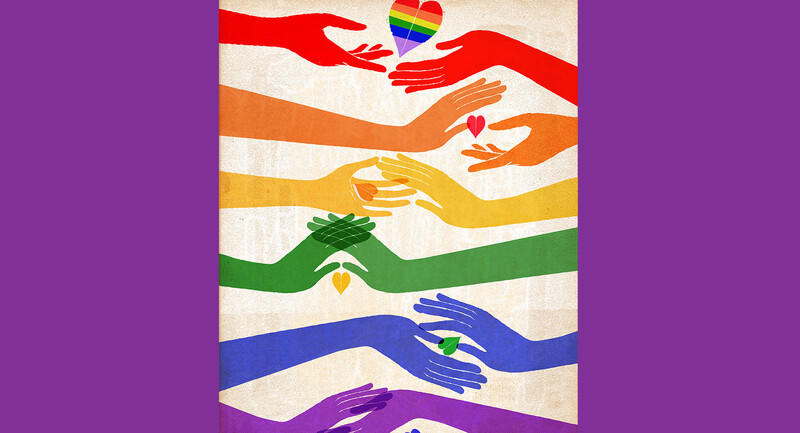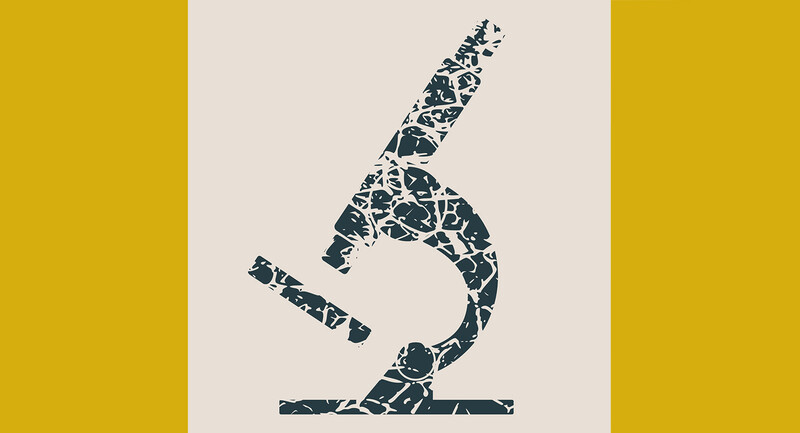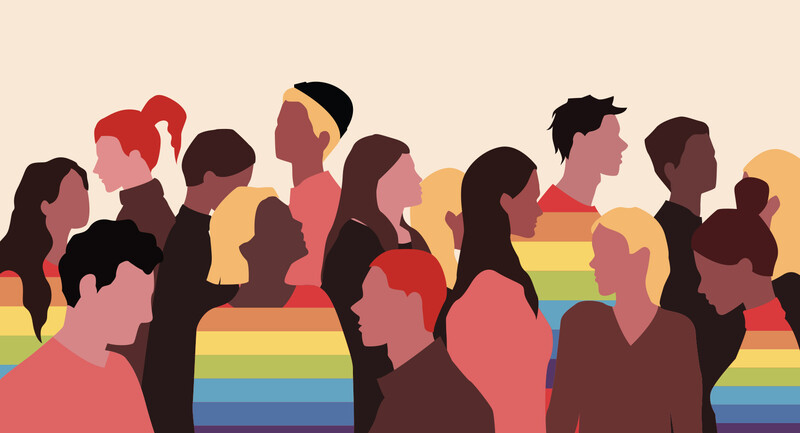In a world where identity and acceptance are critical to students’ mental well-being, Alex, a 10th grader in suburban Boston, must navigate not only the challenging terrain of high school but also the complexities of being a Black trans girl who has spent most of her childhood in foster care and group homes or experiencing homelessness.
Every day, Alex confronts challenges that most of her cisgender peers will never experience. She contends with school policies and programs—from dress codes to school forms, to gendered sports and school curricula—that don’t acknowledge her gender identity and erode her visibility. In classrooms and hallways, Alex experiences misgendering when teachers and students use incorrect pronouns. Even well-meaning teachers and classmates can unwittingly contribute to her sense of “otherness” through questions that, while perhaps arising from curiosity, are intrusive or invalidating (“What’s your real name?” or “Have you had ‘the surgery’?” or “Are you sure this isn’t just a phase?”). She uses the nurse’s bathroom, which is the only safe gender-neutral bathroom on the campus of almost 2,000 students.
These challenges take a toll on Alex’s mental health. Alex has needed counseling and advisory support for anxiety and depression, which stem from the tensions at home and school, including not feeling accepted by her mother and navigating the confusion of dating. At the same time, Alex’s situation demands resilience, requiring her to continually assert her identity. Alex is involved in extracurricular activities, including the debate club, student government association, and the school’s gender-sexuality alliance. She uses these platforms to educate her peers, fight for more inclusive school policies, and support the broader struggle for human and civil rights. In this work, she finds solidarity with allies and peers who share her experiences.
But the constant pressure on Alex to carve out space where she can feel accepted and valued is exhausting. That’s where supportive educators come in.
Discrimination on the Rise
Alex (a pseudonym) was the first transgender student I had as a principal. She taught me a lot about what affirming support should look like in school. Through conversations with Alex and her mom, I worked to get pronoun use right, honor bathroom preferences, and offer advisory meetings for the family. Alex’s story illuminates the multifaceted struggles that LGBTQ+ students encounter every day, even with administrators and teachers in their corner.
The constant pressure on LGBTQ+ students to carve out space where they can feel accepted and valued is exhausting. That’s where supportive educators come in.
But these challenges are hardly confined to school walls. Anti-LGBTQ+ policies at the local, state, and federal levels are spreading like wildfire. Nationally, 84 anti-LGBTQ+ laws have been enacted in the last year, allowing or requiring the misgendering of transgender students; censoring school curriculum and books that include LGBTQ+ characters and experiences; banning gender-affirming medical care; and blocking transgender students’ access to school sports teams (ACLU, 2023; Peele, 2023). At least 10 states have recently enacted laws that prohibit or restrict students from using pronouns or names that don’t match their sex assigned at birth (NBC News, 2023).
Research by The Trevor Project (2023) shows that these discriminatory policies leave deep psychological scars on those targeted. According to the project’s 2023 national survey, which collected responses from more than 28,000 young people ages 13–24, nearly 1 in 3 LGBTQ+ youth said their mental health was poor most of the time or always due to anti-LGBTQ+ policies and legislation. Nearly 2 in 3 said that hearing about potential state or local laws banning discussions about LGBTQ+ people at school made their mental health a lot worse.
Overall, half of queer and trans youth have seriously considered suicide in the past year. More than 70 percent of LGBTQ+ youth experience anxiety and 58 percent report depression. Furthermore, Black, Latinx, Asian and Pacific Islander, and Indigenous LGBTQ+ youth experience higher rates of victimization, sexual violence, policing, homelessness, foster care, and invisibility than their white peers. Despite these difficulties, one in two LGBTQ+ youth surveyed were unable to access the mental health care they desperately wanted; some explained they didn’t want to have to get their parent’s or caregiver’s permission (The Trevor Project, 2023).
The adverse effects of anti-LGBTQ+ policies aren’t restricted to LGBTQ+ students; they affect the school community at large. The current legislative landscape has led to an atmosphere of caution, with the threat of professional consequences driving many educators to engage in self-censorship. This often means avoiding any curricular materials that could be construed as controversial, such as films or books featuring queer or trans narratives; not inviting students to share pronouns in the classroom (some districts have policies that expressly forbid this); or not displaying symbols like pride flags and safe-space stickers on classroom doors.
Teachers, administrators, and even students who don’t identify as LGBTQ+ are caught in the crossfire of these divisive policies. The resulting atmosphere is often one of tension, mistrust, and miscommunication.
Healing Psychological Scars
To mitigate the adverse effects of oppressive legislation, schools must strive to become bastions of inclusivity. Those that fail to address or challenge harmful policies are not only neglecting the welfare of their students but also are complicit in the ongoing mental health crisis affecting LGBTQ+ youth.
In my capacity as the cochair of the Massachusetts Commission on LGBTQ Youth and as a member of the LGBTQ+ community, I’ve been a point of contact for countless teachers, parents, school leaders, healthcare professionals, and government officials seeking guidance on how to protect our most vulnerable students. I generally tell young people who seek my help that our commission is a resource and support to all, and that we can connect them to resources and agencies that can provide long-term, specialized care and support. My colleagues and I also let them know that they are loved and visible to us as a commission created to help, and that we can introduce them to other youth and families who have been resilient in the midst of similar storms. I often stress how important conversations and connections are in this work, which is why our commission has a network of resources and LGBTQ+ families to help young people face the challenges with support.
To mitigate the adverse effects of oppressive legislation, schools must strive to become bastions of inclusivity.
When talking with educators and school leaders, I start by acknowledging that they have to strike a delicate balance: providing essential academic and social-emotional support to their students while navigating restrictive policies that may stifle inclusivity. Here are some specific suggestions.
Prioritize Safety and Well-Being
Feeling safe can have a profound impact on students. In creating classroom communities in which every student feels valued, seen, and understood, teachers and leaders can establish anti-bullying policies that reinforce the classroom as a safe zone from harassment and discrimination. (This encompasses respecting preferred pronouns, inclusivity in group work and tasks, and zero tolerance for discriminatory language.)
Additionally, educators can implement check-in protocols, offering regular, structured opportunities for students to discuss their feelings and experiences in a confidential setting. This could include demonstrating deep empathy and active listening and providing a way for students to report harmful behavior anonymously. A proactive approach ensures that issues are addressed promptly; it also communicates an attentiveness to students’ emotional needs.
Know How to Work Within Barriers
With educators positioned as pivotal influencers in students’ lives, it is essential they are equipped with clear guidelines from local, district, and state leaders for discussing LGBTQ+ topics and advocating for their students’ mental well-being, especially in less accommodating settings. In some districts, educators may be able to step in and advocate to school boards and parent-teacher associations that make policy decisions affecting marginalized youth.
District and school leaders can prioritize professional development that equips educators with the knowledge and skills to support LGBTQ+ students effectively. PD should include creative yet intentional ways to build safe and brave spaces that protect students, but also meet the edict of local or state anti-LGBTQ+ policies. Such training can empower teachers to navigate complex scenarios and advocate for students within the confines of existing policies.
Connect LGBTQ+ Issues to Universal Themes
Educators can normalize LGBTQ+ identities by integrating LGBTQ+ literature and media that reflects the diversity of students’ identities within the context of common human experiences such as friendship, courage, and perseverance. There are a number of stories and historical narratives that focus on these themes with characters who are LGBTQ+, but that don’t make identity the central focus. Additionally, educators can organize activities such as storytelling projects, where students share personal anecdotes that highlight their aspirations and challenges. These stories emphasize the shared aspects of human experience, such as the quest for identity and the need for support, which cultivates empathy. The goal is for students to understand that we’re all seeking—and deserve—belonging and self-acceptance.
Use Fact-Based and Neutral Language
Language matters. Incorporating facts and neutrality into discussions about LGBTQ+ issues can foster an educational atmosphere grounded in truth. Teachers can initiate this by displaying posters in their classrooms that provide clear, factual information about LGBTQ+ terms and concepts—such as the appropriate use of gender pronouns—which creates a visual affirmation of the school’s inclusivity.
Additionally, principals can organize professional development workshops for teachers on the correct terminology, knowledge, and sensitivity needed to respectfully discuss gender identity. (Many organizations provide research-based resources for such training.) Moreover, teachers might integrate fact-checking exercises into the curriculum, where students critically assess media representation of LGBTQ+ individuals, promoting critical thinking and media literacy. This practice empowers students to navigate a world rife with misinformation.
Provide Access to Specialized Support
The availability of specialized behavioral, psychological, and social-emotional support can be a lifeline for students like Alex, who deserve access to providers who uniquely understand their experiences. Principals play a crucial role in facilitating these services, starting with the recruitment and training of school counselors who have a background or expertise in LGBTQ+ youth mental health. Principals can create partnerships with local health or telehealth providers and other youth-serving institutions to administer in-school clinics or workshops on topics such as mental health awareness and stigma reduction, substance abuse eradication, healthy relationships and consent, stress and coping strategies, suicide prevention, and body image and self-esteem.
Educational spaces must not only be inclusive and understanding but also fundamentally safe.
They can also ensure students have access to extracurricular clubs, like gender-sexuality alliances (GSAs) or peer-support programs. These groups can help students connect with one another under the guidance of a trained moderator (often a school counselor). This multi-tiered approach assures students that their well-being is a priority.
A Brave Path Forward
Educational spaces must not only be inclusive and understanding but also fundamentally safe. It is imperative that educators actively dismantle barriers raised by exclusionary policies, adopting approaches that acknowledge and uplift every student. Through a commitment to empathy, awareness, and decisive action, we forge a path forward where the academic success of students like Alex, who face the pressure of often finding no space to be themselves, is intertwined with the affirmation of their identities. This ensures a future where each student emerges not only educated but truly seen and wholeheartedly supported.









